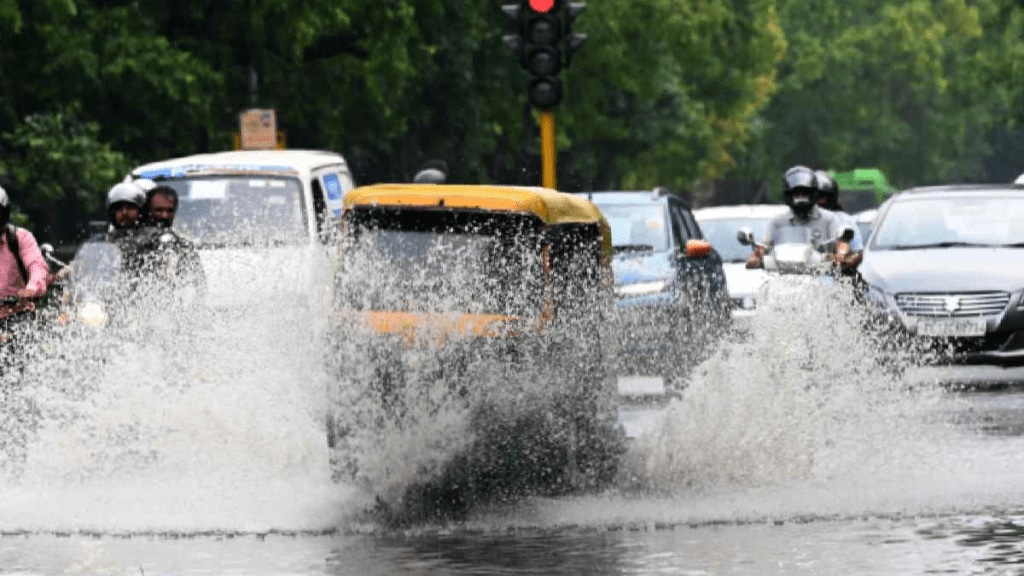Delhi is facing persistent rainfall since Friday morning, leading to significant waterlogging and traffic disruptions across several parts of the city. The Burari area, in particular, is experiencing severe traffic congestion as water levels rise, causing delays for commuters.
The India Meteorological Department (IMD) has reported that the minimum temperature in the city has dropped to 12°C, while the maximum temperature stands at 19°C. The IMD has predicted “thunderstorms with rain” for the day, continuing to impact daily activities.
Local residents have mixed feelings about the weather. Deepak Pandey, a resident of the area, expressed, “The weather has become good and it feels like Kashmir. It is cold, but the rain has decreased the level of pollution, making it more pleasant for travel.”
However, despite the pleasantness of the cooler temperatures, the city’s air quality remains a concern. As of 2 pm, Delhi’s Air Quality Index (AQI) was measured at 355, falling within the ‘very poor’ category. Areas like Anand Vihar, IGI Airport (T3), Aya Nagar, Lodhi Road, ITO, Chandni Chowk, and Punjabi Bagh are all experiencing AQI readings above 300, indicating poor air quality.
For comparison, AQI levels at 7 am showed even worse conditions, with Anand Vihar reaching 398 and Punjabi Bagh at 386. Although there was slight improvement in the afternoon, the air quality remains a serious issue for the residents of the capital.
The Central Pollution Control Board (CPCB) continues to monitor the situation closely, and despite the improvement in air quality since December 24, the government has decided to revoke Stage IV (‘Severe+’) measures under the Graded Response Action Plan (GRAP) for Delhi and the National Capital Region (NCR). However, actions under Stages I, II, and III will still be in effect to prevent further deterioration of air quality.


